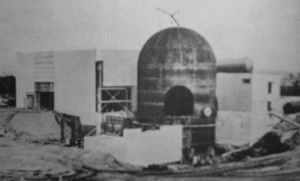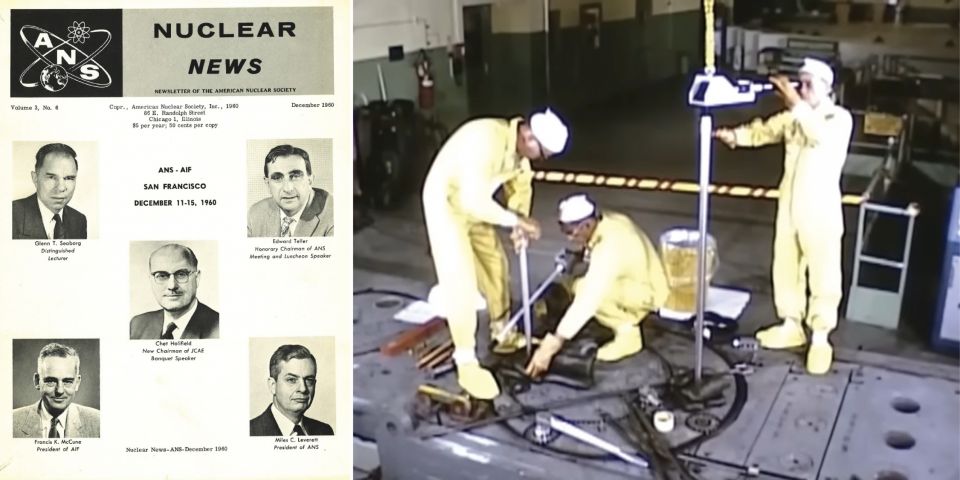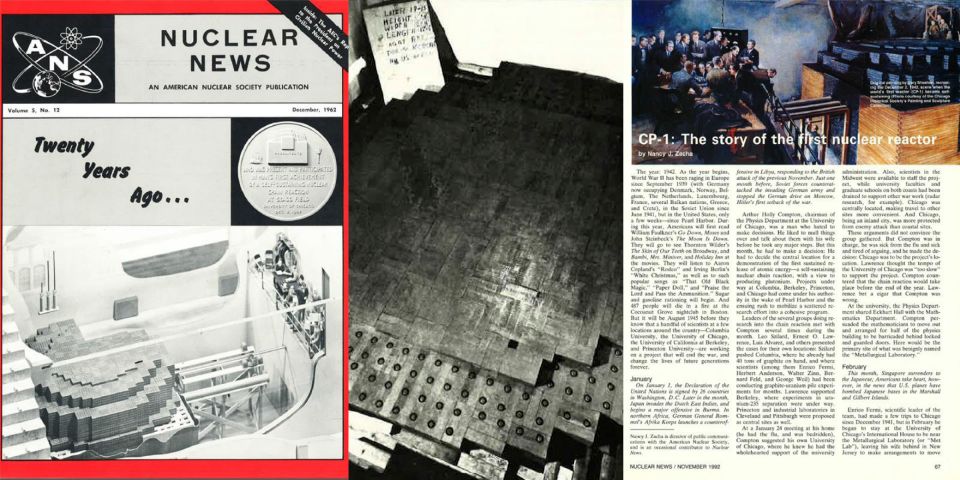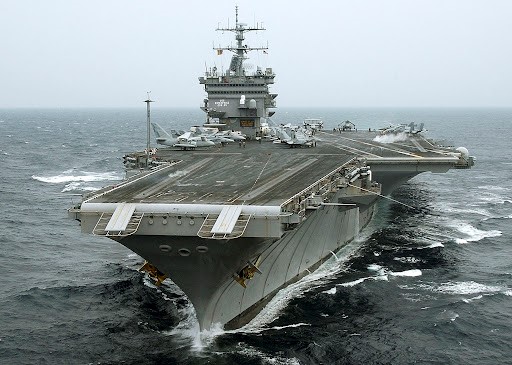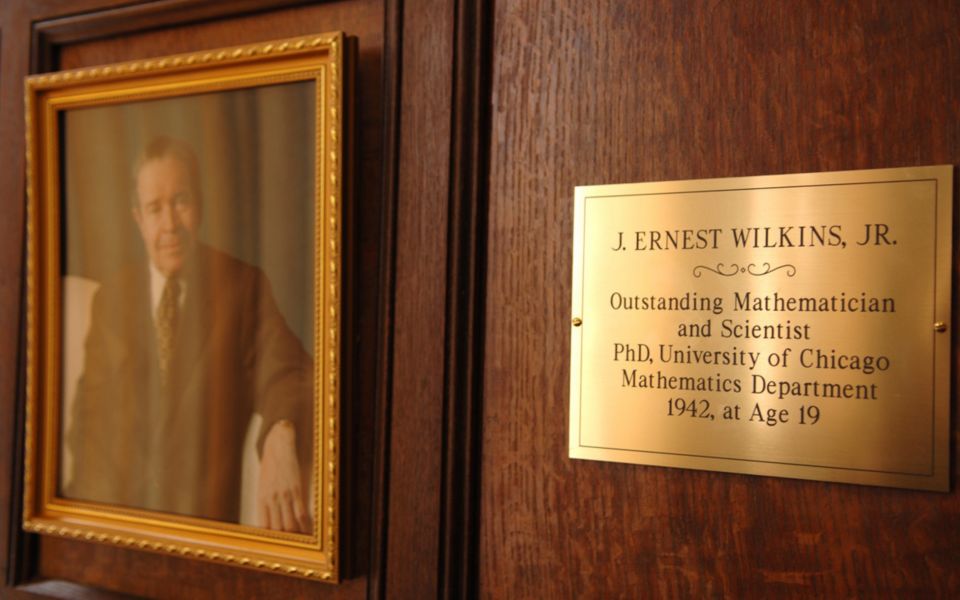Pathfinder: A Path Not Taken
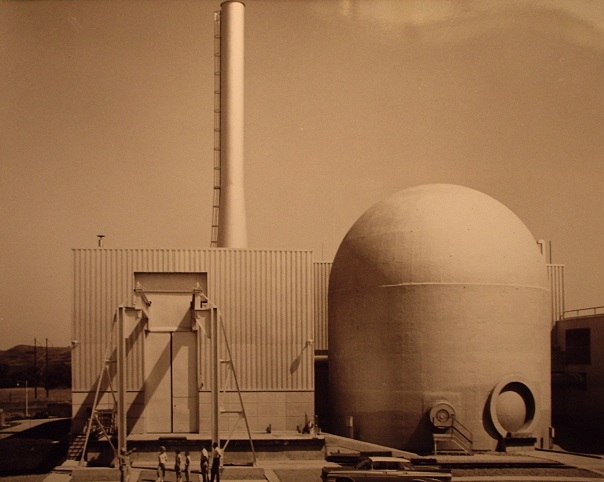
Pathfinder Atomic Power Plant. Press photo, Will Davis collection.
The recent U.S. Environmental Protection Agency announcement of policy regarding carbon emissions from power plants has triggered a renewed interest in nuclear energy over the past few weeks; along with this of course comes a focus on small modular reactors (SMRs) and their availability for replacing existing fossil-fueled plants or facilities. We have discussed this topic here at ANS Nuclear Cafe before, in terms of the possibility of adding an SMR onto an existing facility-see "The Hook-Ons."
A major potential stopper in the concept of adding a reactor to an existing generating plant is this: Water-cooled nuclear reactors cannot produce superheated steam-that is, steam that has been boiled from water and that is then heated up even further before being used to run an engine or turbine. Superheating the steam requires more energy (from whatever the fuel source is), but, importantly, drives the efficiency of the power plant up quite a bit overall. Water-cooled plants can't do this because of the limits of boiling water using either the reactor directly or due to the limits of boiling some water using other water (the pressurized water concept). Yes, some water-cooled reactors do achieve a tiny bit of superheat-but not enough so that the steam plant they're supplying can be designed for high temperature, dry, superheated steam ("dry steam" has no entrained water droplets). Why is this a problem? Because for many years fossil-fired generating plants have been designed for superheated steam in order to drive up efficiency.
So, one would need to add a superheater fired by fossil fuel (as was done at some early nuclear plants) or else replace the entire power plant (turbine and all) with an SMR nuclear plant, possibly reusing the electric and water infrastructure. It's a major consideration.
In the early days of atomic energy, the idea of developing a water-cooled reactor that actually could superheat steam (thus avoiding this conundrum) was tossed around quite a lot-the potential advantages were great, but the technical barriers were also enormous. Fuel temperature was the major consideration, because the fuel had to exist in a steam environment that reactor designers normally avoided. However, one reactor was actually built and operated here in the United States that attempted to do just this. The power plant in question was Northern States Power Company's (NSP) Pathfinder Atomic Power Plant (named after early explorer John C. Fremont, known by Indians as "the path finder") near Sioux Falls, South Dakota-one of two commercial reactor plants designed by the Allis-Chalmers (A-C) Manufacturing Company.* It is also, unfortunately, possibly the least successful commercial power reactor built in the United States. Pathfinder represents the first, and last, time on U.S. soil that a water-cooled, superheated steam reactor was built for commercial power.
Pathfinder was originally contracted in 1957, with A-C acting as the prime contractor; the architect-engineer (Pioneer Service & Engineering Co.) and constructor (Fegles Construction Co. and Power Service Corporation) were responsible to A-C under the arrangement, not to the plant's owner, NSP. The financing arrangement was typical for early reactors of the day: NSP funded most of the cost (eventually over $30 million) with a consortium of utilities contributing another $3.65 million for R&D costs. The U.S. Atomic Energy Commission (AEC) contributed another $8 million for R&D and also waived fuel costs for the first five years (a value estimated initially at about $1.8 million)-both under the third round of the Power Demonstration Reactor Program.
As initially conceived, the plant that became Pathfinder was to be a controlled recirculation, direct cycle boiling water reactor-and was referred to frequently in early literature as the CRBR or Controlled Circulation Boiling water Reactor. In 1958 however, A-C began to redesign the plant to remove its original superheater (which would have been fired either on oil or coal-this had not yet been decided) and develop an integrated steam superheater in the actual reactor itself. This would employ a "two region" core-one section of the core would, first, heat up and boil the water; the steam from this section would then reverse course and head down through a central superheating core (of wholly different construction) and then exit the reactor. Below, we see a flow diagram showing the steam system as the plant was redesigned.
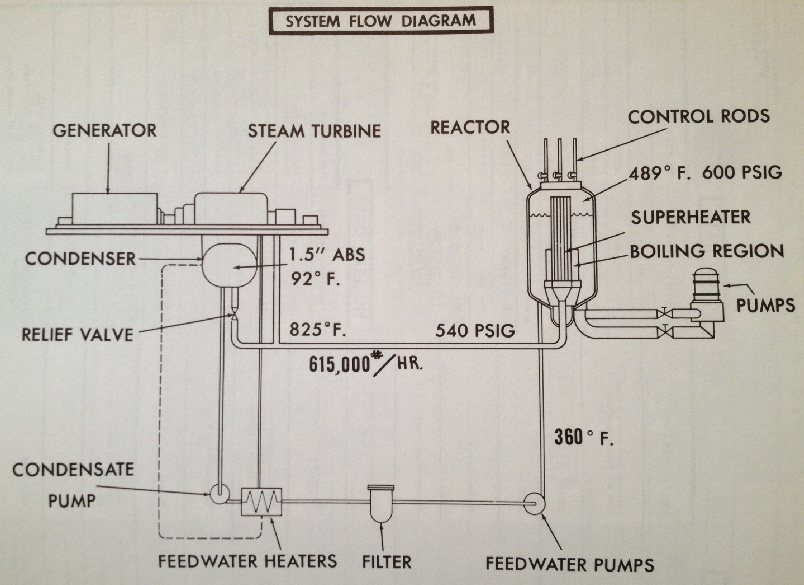
Pathfinder flow diagram. Nuclear Reactor Plant Data, Volume 1 - Power Reactors. ASME 1959
Construction and testing of Pathfinder proved exceedingly difficult and protracted-in part, no doubt, because of the groundbreaking design of the reactor itself, but also because of the complicated control and indication systems required for the plant. Without getting into deep technical detail, this plant's control system was made highly complicated by the need to incorporate many automatic protections for the superheater itself, as well as protections against rapid changes in flow or power. It also seems clear in retrospect that A-C's relatively small and new Atomic Energy Division was in well over its head.
Construction of the plant began in July 1959; at that time, the reactor was expected to attain criticality in May 1962 with full commercial operation expected sometime in the fall of 1962. In fact, construction of the plant was completed in summer of 1962 but the control rod drives and vessel internals were not shipped to the site until October. After this, a drawn-out period of contesting with the AEC over the plant protection and control systems ensued so that the AEC did not even issue a low power operating license to NSP until March 1964; the reactor was made critical on March 24, 1964.
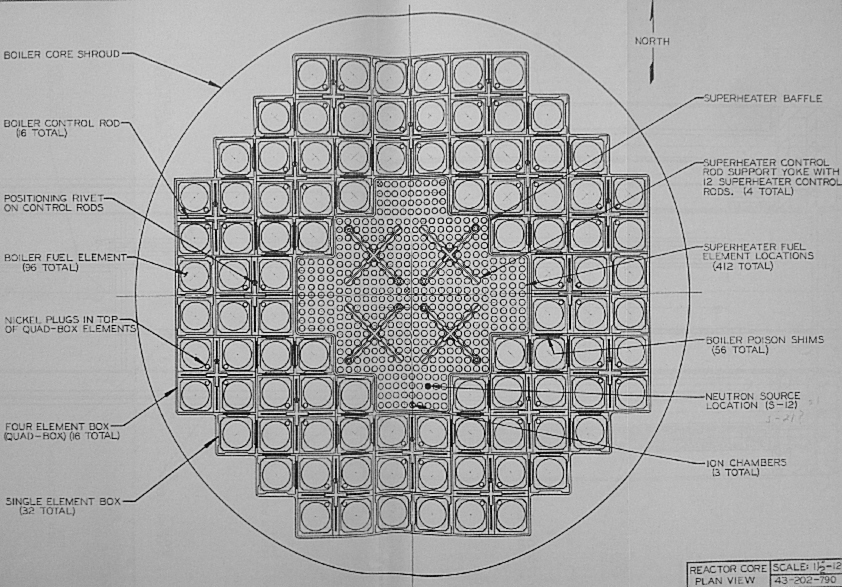
Above: A look directly downward at the Pathfinder reactor core. The boiling elements around the exterior of the core surround the superheater at center. This view is only inside the core shroud; outside of this, but of course inside the reactor vessel, were a large number of submerged steam separators-designed to remove entrained steam from water being carried down to the recirculating pumps. Source: Northern States Power Company-Pathfinder Atomic Power Plant Operations Manual, Allis-Chalmers Manufacturing Company/Atomic Energy Division, Preliminary, December 1961, Will Davis collection.
All of 1965 and 1966 were taken up with low power testing of the reactor and adjustment and modification of varied instrumentation and systems. NSP declared the plant to be in commercial operation August 1, 1966, but in fact the plant was not ready for sustained operation. Finally, in early 1967, the plant briefly achieved 90-percent power; the stage was set for the full power test. Further control problems delayed the test, but it was finally conducted in September-the plant, according to NSP, ran at its full rated power for 30 minutes, and was then to be inspected. This led to the lore about the reactor only ever achieving rated power for a half hour-and this is true, but only to an extent. The truth is below.
The Pathfinder reactor as actually built was designed to develop 203 MWt; the boiler section contributing 164 MWt and the superheater 39 MWt. The turbine generator was rated 66 MWe gross, with a net output of 61.8 MWe. However, the official NSP history states that the full power run of the plant was done at 58 MWe-obviously not the full rating. Only after examining the actual reactor plant manuals do we discover that the initial testing of the plant was planned for a lower superheat temperature (725 °F instead of 825 °F-see the flow diagram) and for a boiler power of 157.4 MWt/superheater power of 31.5 MWt. This was slated to develop (according to the manual) 62.5 MWe gross and 58.5 MWe net. Thus, the storied "only ran at full power for 30 minutes" is actually "only ran at its reduced, initial operation parameters for 30 minutes." The reactor never did achieve its designed operating full power of 203 MWt.
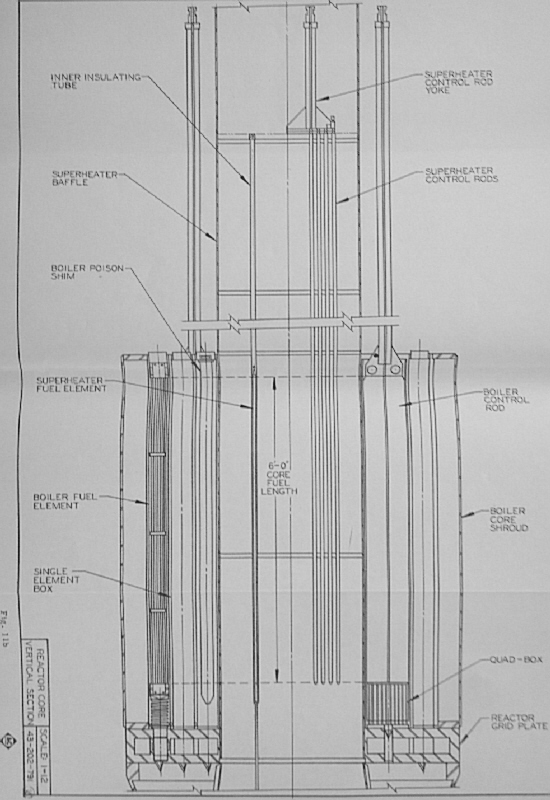 Left, side view of the Pathfinder core. The boiler elements were constructed with low enriched uranium, but the superheater elements (originally planned for about 20% enrichment) were actually constructed with 93% enriched uranium. The reactor had both boiler and superheater control rods-but the superheater rods did not move on a scram; instead, they moved in at normal speed on "runback." The superheater had to have steam flow in order to maintain cooling-and this led to much further complication on loss of steam flow (turbine trip, etc.) to ensure steam still flowed through the superheater long enough to cool it safely.
Left, side view of the Pathfinder core. The boiler elements were constructed with low enriched uranium, but the superheater elements (originally planned for about 20% enrichment) were actually constructed with 93% enriched uranium. The reactor had both boiler and superheater control rods-but the superheater rods did not move on a scram; instead, they moved in at normal speed on "runback." The superheater had to have steam flow in order to maintain cooling-and this led to much further complication on loss of steam flow (turbine trip, etc.) to ensure steam still flowed through the superheater long enough to cool it safely.
After the full power run was completed, the reactor was disassembled partly for examination and removal of some poison shims. Alarmingly, it was seen that the bottom ends of the steam separators around the reactor core had suffered "gross failure," and the superheater elements' seven and a half thousandths of an inch thick cladding was suffering high erosion. Further, during the shutdown the main condenser tubes had leaked, and some contamination had spread to the secondary plant. NSP had seen enough; in November, just two months after the 30-minute full power test (which came about five years after originally planned) it decided to shut down the plant permanently and decommission the reactor.
Statements by NSP officials in the company's official history place most of the blame for the failure of the plant on the incorporation of the superheater, saying that it was the expense of including this design that doomed the plant. One wonders if the tipping point, indeed, had been the decision almost a decade earlier to "grab the brass ring," and go for superheating in the reactor itself. What's clear is that this was the only time this was attempted on U.S. soil in a commercial power reactor (another quite different boiler-superheater reactor was operated briefly in Puerto Rico, under AEC auspices and designed by General Nuclear Engineering/Combustion Engineering, and also led to no further progress).
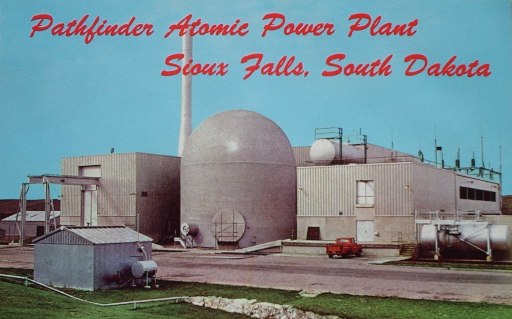
Pathfinder post card, Will Davis collection.
The Pathfinder plant was written off by NSP in 1968; it was converted to a fossil fired peaker plant known as Pathfinder Peaking Plant. The isolated nuclear steam supply system was placed in SAFSTOR until 1991-1992 when decommissioning was performed; the peaking plant operated until summer 2000 when the cooling tower collapsed during severe weather. At that time, the plant's owner, which by this time was Xcel Energy, decided to completely decommission the entire former Pathfinder plant. The Angus Anson Generating Station is immediately adjacent to the former Pathfinder site.
The silver lining of this whole affair? Well, for superheating reactors there was none. But for NSP, there was-company officials directly credit their long experience with Pathfinder as having contributed materially to their nuclear staff, their nuclear safety culture, and their successful construction and operation of Monticello and Prairie Island nuclear stations with little problem. In that sense, Pathfinder actually did live up to its name.
We find ourselves, today, far removed from Pathfinder, and the other nuclear superheating experiments (principally the ESADA superheat reactor, BORAX-V and BONUS in Puerto Rico) and so it's no surprise that they're largely forgotten. What we glean from learning about them is that the seemingly perfect direct match of a superheated steam producing reactor and an already built steam plant can't be achieved, at least not with water-cooled reactors as are employed at the vast majority of the world's nuclear generating stations today and as are planned under the Department of Energy's SMR program as presently envisioned-although other programs exist to develop, for example, high temperature gas cooled reactors. This will be important to explain to the general public, who may either wish to see a wide deployment of nuclear energy to replace GHG-emitting sources, or on the other hand may be afraid of nuclear energy and thus could be desirous of more, and better, information.
* The other was Dairyland Power Co-Operative's Genoa No. 2 unit, known better in nuclear circles as the LaCrosse Boiling Water Reactor. A third reactor, the Elk River Reactor, fell under A-C's control when ACF Industries sold its nuclear business to A-C in 1959. As a matter of interest, A-C also bought most of ALCO Products' nuclear business in 1962. A-C announced it was exiting the nuclear business (except for providing support to projects still underway) on March 25, 1966, citing serious doubt that it would become profitable in the foreseeable future.
______________________
Sources:
• Northern States Power Company-Pathfinder Atomic Power Plant Operating Manual, Allis-Chalmers Manufacturing Company 1961 (multiple volumes)
• "The Energy to Make Things Better"-An Illustrated History of Northern States Power Company. Northern States Power Company, 1999.
• Nuclear Reactor Plant Data, Volume 1-Power Reactors, 1959. American Society of Mechanical Engineers. McGraw-Hill, New York, 1959.
• Pathfinder Decommissioning Plan, Xcel Energy, February 2004.
(All items above in Will Davis collection; many thanks to Ray Dennis.)
----------
For more information:
Pathfinder was partially funded by the AEC under the Power Demonstration Reactor Program. Read about that program here.
The recent EPA announcement stirred a fury of attention for nuclear power. The path forward is not something that can be immediately established, and doesn't include a whole lot of easy answers. Read about the path forward here.
______________________
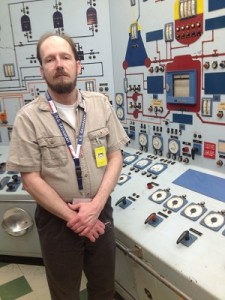 Will Davis is the Communications Director for the N/S Savannah Association, Inc. where he also serves as historian and as a member of the board of directors. Davis has recently been engaged by the Global America Business Institute as a consultant. He is also a consultant to, and writer for, the American Nuclear Society; an active ANS member, he is serving on the ANS Communications Committee 2013-2016. In addition, he is a contributing author for Fuel Cycle Week, and writes his own popular blog Atomic Power Review. Davis is a former US Navy reactor operator, qualified on S8G and S5W plants.
Will Davis is the Communications Director for the N/S Savannah Association, Inc. where he also serves as historian and as a member of the board of directors. Davis has recently been engaged by the Global America Business Institute as a consultant. He is also a consultant to, and writer for, the American Nuclear Society; an active ANS member, he is serving on the ANS Communications Committee 2013-2016. In addition, he is a contributing author for Fuel Cycle Week, and writes his own popular blog Atomic Power Review. Davis is a former US Navy reactor operator, qualified on S8G and S5W plants.


